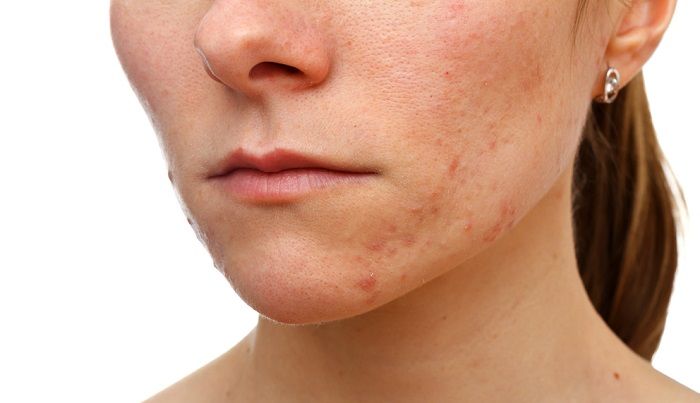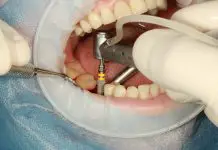Adult acne is becoming more common today. In fact, according to clinical studies between 40 to 55% of adults aged from 20 to 40 are diagnosed with persistent acne and oily skin.
The Journal of American Academy of Dermatology states that about 54% of women above the age of 25 have some form of facial acne. Acne in adults is generally inflammatory in nature based on research by The International Dermal Institute.
The treatment for adult acne is more complicated since adults often have sensitive skin and combination skin aside from acne.
What Is Acne?
Acne is usually described as a disease that affects the sebaceous follicles together with the hair follicles of the skin. It is usually connected to genetic predisposition, but other factors like skin care regimen and diet may also play a role or causes of acne.
The sebaceous and hair follicles are connected with the production of sebum that is a combination of several lipids. The hair follicle then transports sebum and other cellular debris to the skin’s surface where it will be removed.

Inflammation or infection can occur when the hair turns ingrown or clogging occurs on the hair follicle’s opening. During the onset of puberty and other instances of hormonal fluctuations, sebaceous gland activity can be stimulated which promotes the development of acne.
Acne is becoming a more serious problem today because aside from affecting a person’s physical health, this skin condition can also take a toll on your mental health and confidence. Having chronic acne will make it very challenging for you to get out of your comfort zone and seize opportunities in life. How can you apply for a job if you are too conscious about the acne of your face? Do you think you will have the confidence to mingle with other people if your face is filled with acne? Acne is a common skin condition that should be treat as soon as possible.
New Ways for Treating Acne
There are many treatments for acne and lifestyle changes may also be in order to help reduce it.
While some of these treatments have been known for generations, others are still new. In the same manner, some of these treatments are cheap while some are very expensive.
Here are some of the newest solutions to adult acne:
Consume Less Refined Carbohydrates
According to Albert Lefkovits, MD who is director of the prestigious Park Avenue Center for Advanced Medical and Cosmetic Dermatology located in New York City, consuming junk food or chocolate by itself doesn’t seem to directly cause acne.
In a study by Australian researchers in 2007, people who strictly followed a low-glycemic index (GI) diet had fewer acne lesions by an average of 22% in comparison to those who followed a high-GI diet.
Experts believe that increased insulin levels from simple carbohydrates trigger the release of certain hormones that can cause inflammation of the follicles and increase the production of oil which both increases the chance that a person will develop acne.
Decrease Consumption of Dairy
In a study at Harvard back in 2006, it was found that girls who drank at least two glasses of milk every day had approximately a 20% increased risk of acne compared to those who drank only about a glass per week.
Another study published in 2008 indicated that skin milk specifically may be the culprit because it has a higher amount of sugar.
Experts believe that the hormones in dairy products may also play a role in causing acne. For those with acne, this simply means to reduce consumption of dairy products and switch to non-dairy alternatives like nut milk and 1% milk. It would also a good idea to significantly reduce sugar consumption.
If dairy products have been part of your lifestyle, you should start making changes as soon as possible. Looking for other alternatives to dairy can be tough as you’ll have to search through countless products and adapt to changes, so make sure that you start working on this as soon as possible.
Blue Light Therapy
Blue light therapy for acne is one of the newest effective treatments but it is still priced high so only a few can afford it.
It involves powerful rays that penetrate the follicles and destroy bacteria that cause acne. This therapy is facilitated by an expert in dermatology in Orlando or in other local areas. For severe acne, Photodynamic therapy is advised wherein a topical solution (Levulan) is added to regular blue light therapy. The professional fee of dermatologists is around $250 for one session, but photodynamic therapy is around $800 a session. The more severe your acne is, the more expensive this therapy can get as you’ll have to pay for more sessions to see results.
New Drug for Acne: Aldactone
Aldactone (spironolactone) is not really a new drug since it has been used for treating high blood pressure for a long time. It is now well-known for treating hormonal acne that affects many individuals.
The drug when taken orally blocks the receptors of androgen which prevents testosterone surges that directly cause the development of pimples. Take note that this option is only for those with hormonal acne.
Although this drug is known to treat hormonal acne, it’s always best if you consult a dermatologist in Orlando Florida, and other experts in the skincare industry first. You need to ask for their recommendations to ensure that you will be using the right drug and the right dose. A dermatologist can also help set your expectations on the effects of the drug on your body and assess if you are experiencing any side effects. Disregarding this step can put your health and safety on the line.
Anti-Acne Systems
This is also a not-so-new treatment for acne, but there is one popping up from somewhere every few seconds. There are many anti-acne systems that really work. These are usually cleansers, antibacterial lotions and other formulations that are used a few times daily to keep the skin clean and prevent acne. Make sure to research carefully to find out if the anti-acne system you’re planning to purchase really works.
Take Note That Old Treatments Still Work
There are many new treatments for acne, but the good old ways still work in most cases. For example, mild to moderate acne is usually treated by dermatologists by using cleansers with benzoyl peroxide which works by killing bacteria. There are also prescription antimicrobial agents like clindamycin, erythromycin and for more severe cases prescription retinoids may be needed.
https://www.solvaderm.com/blog/acne-and-blemishes








































